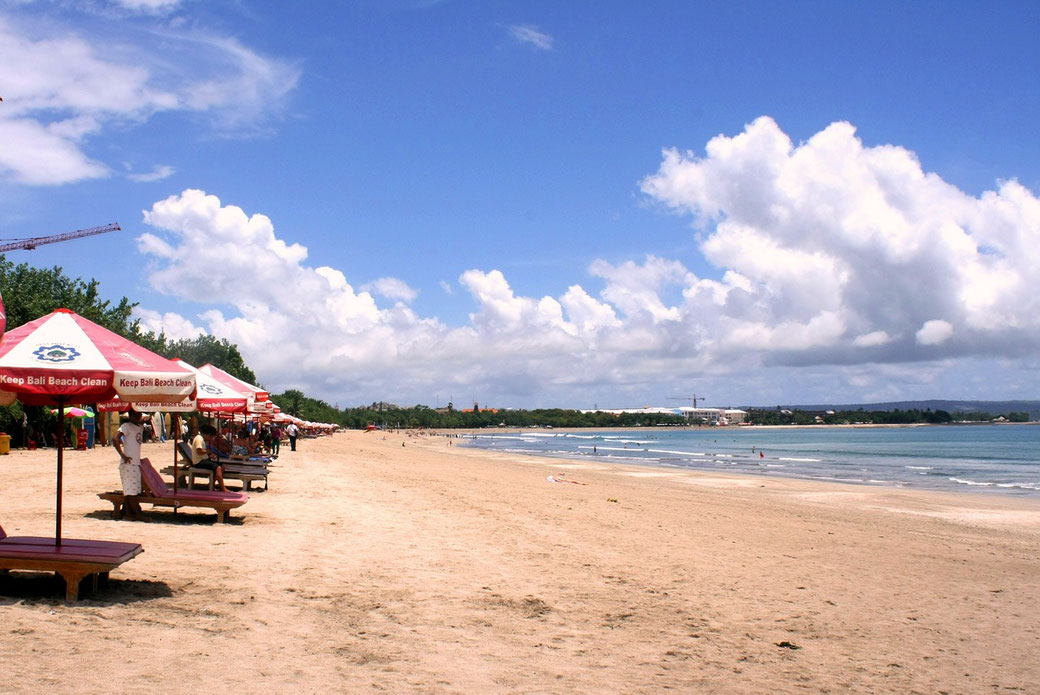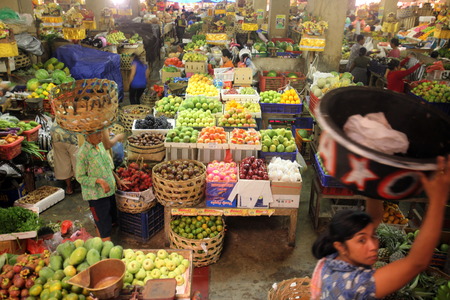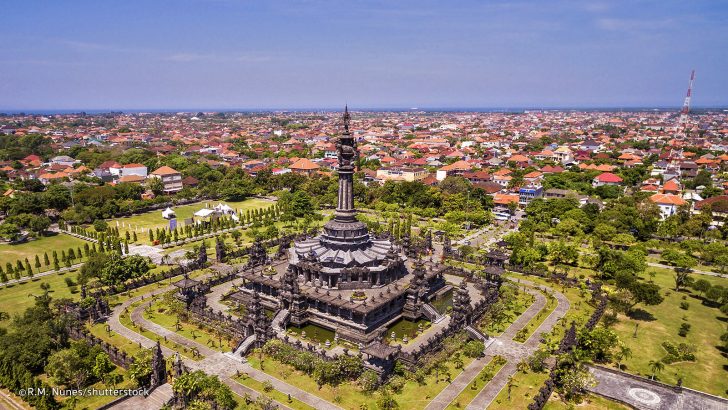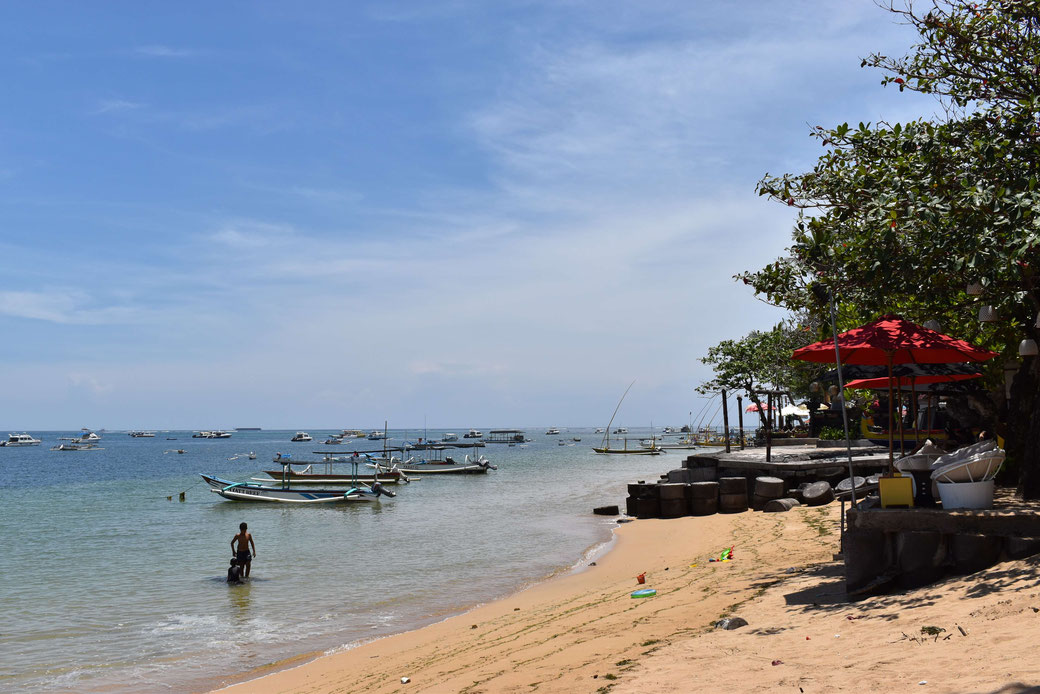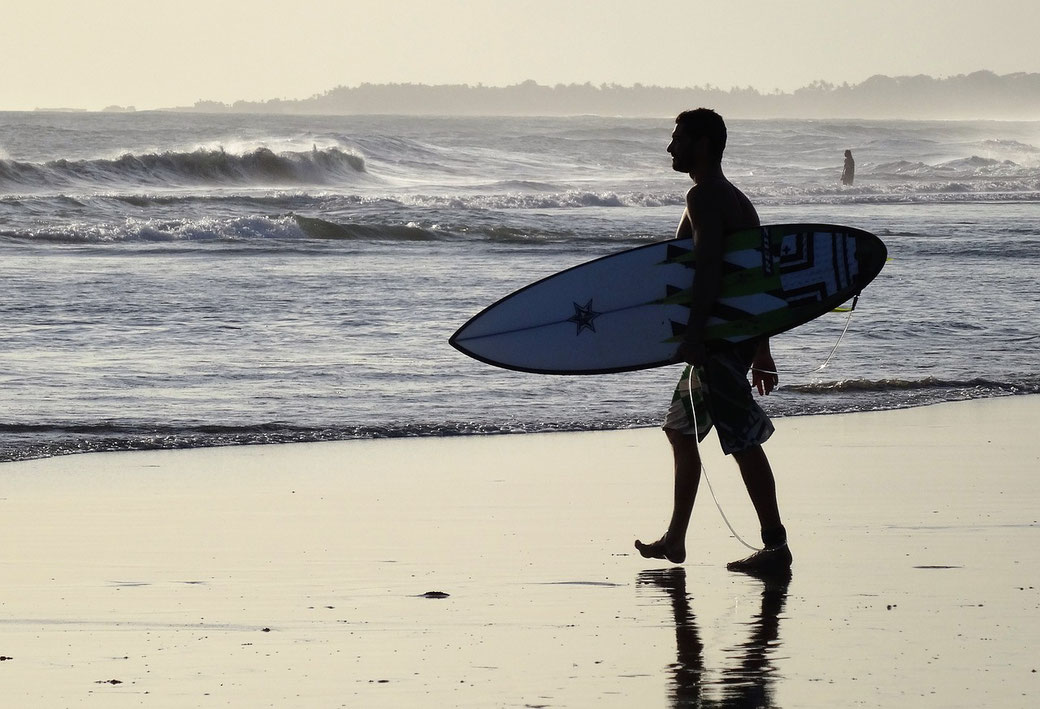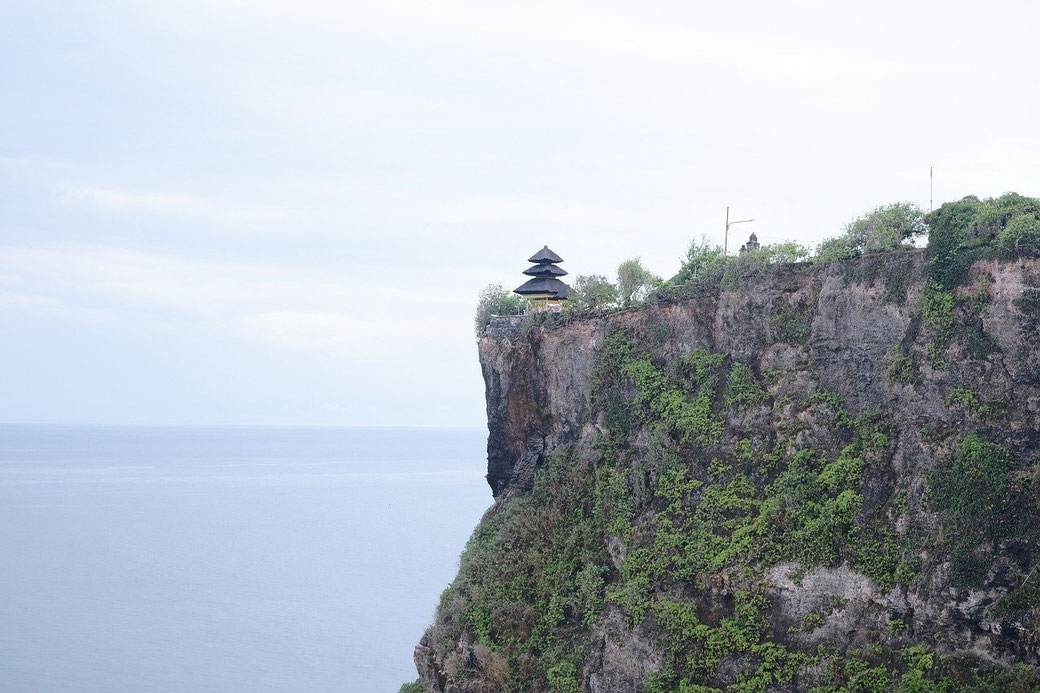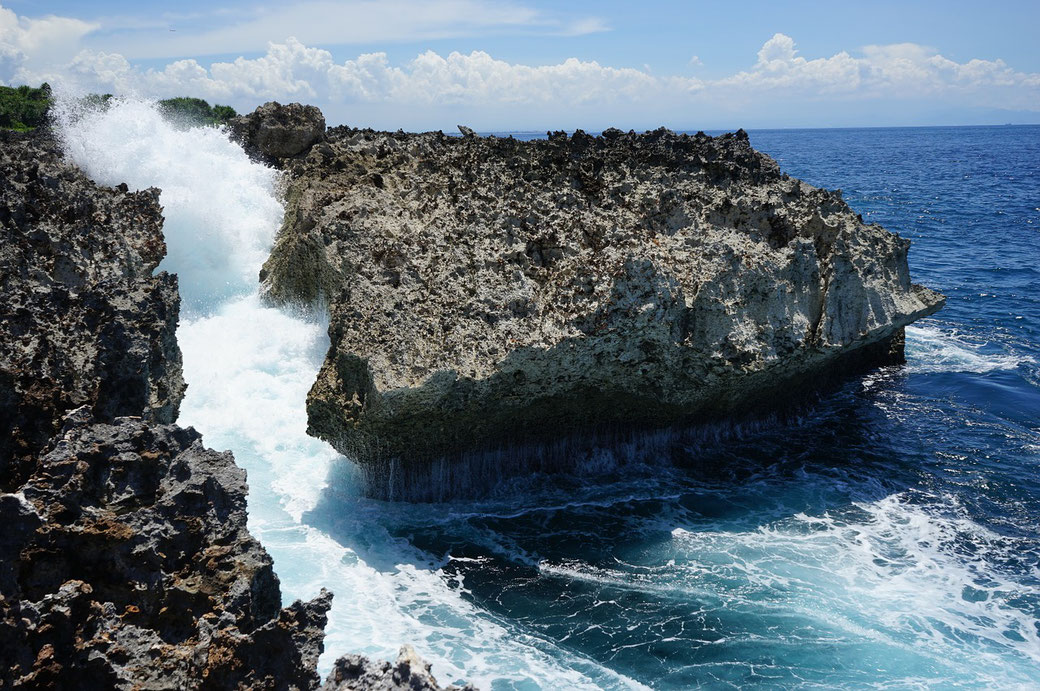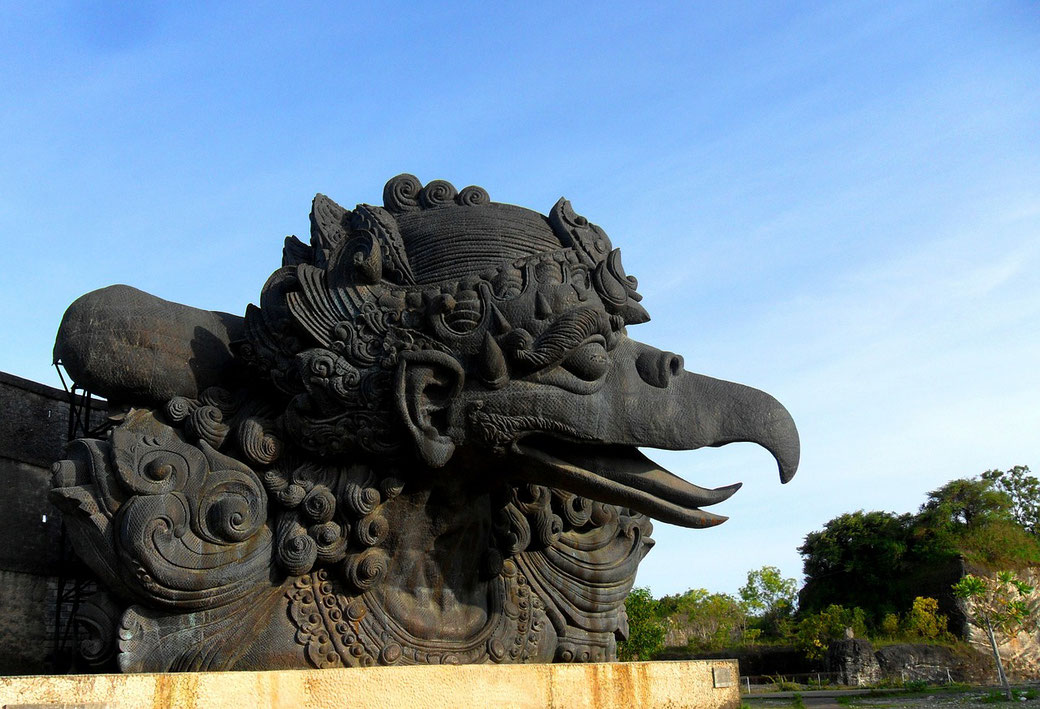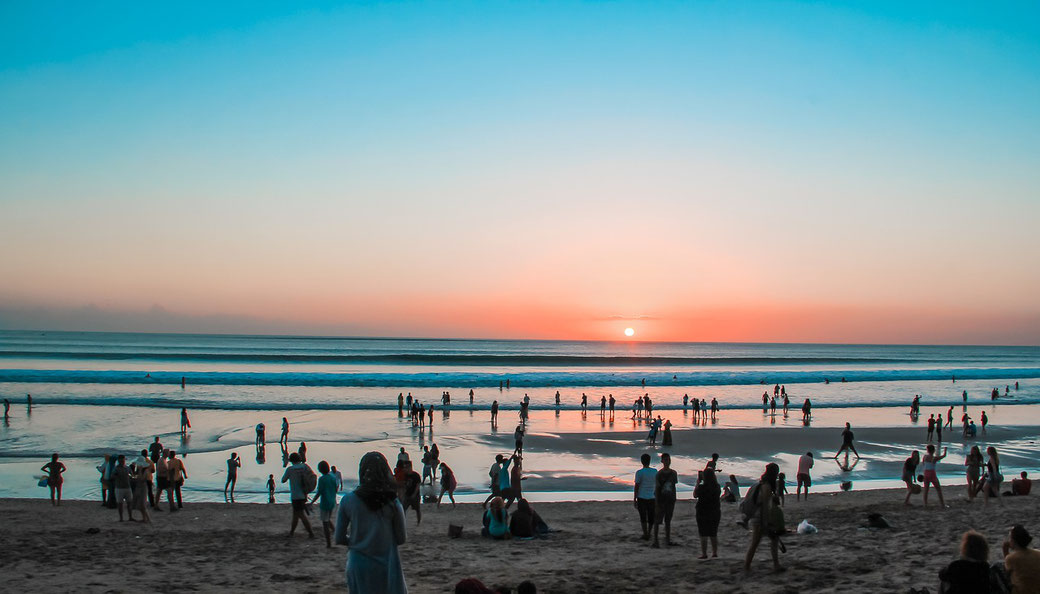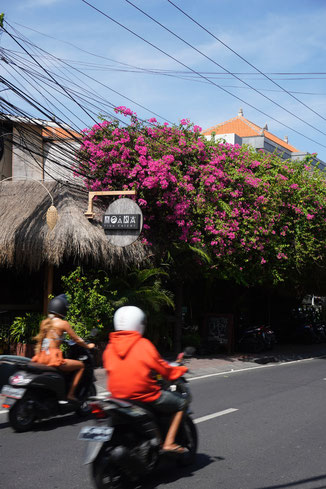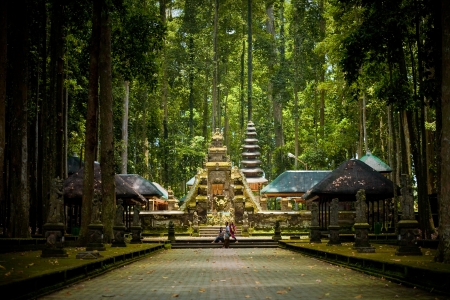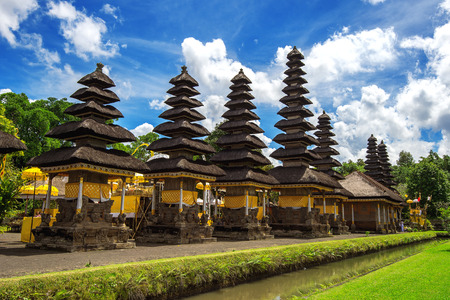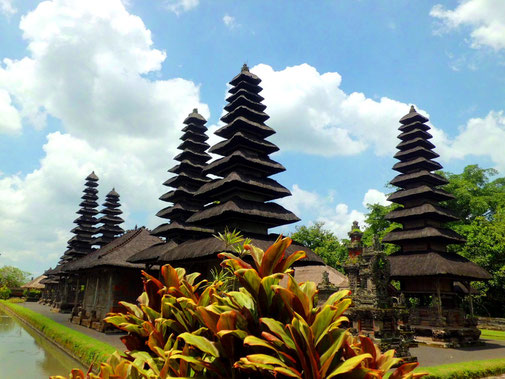badung & denpasar
The regency of Badung covers less than one tenth of the island, but is it the most highly populated region and has an important role in modern Bali. The seat of the provincial government is in Denpasar, Bali´s capital city.
denpasar
Denpasar is the capital city of Bali, Indonesia. It serves as the main gateway to the island and is situated on the southern coast of Bali. Here's an overview of its history, culture, tourist attractions, and its function today:
History:
The history of Denpasar dates back to ancient times, but it gained significance during the 19th century as the Dutch colonial administration established its presence in Bali. The city's name is derived from the Balinese words "den" (north) and "pasar" (market), indicating its historical role as a market town. During the colonial period, Denpasar grew as an administrative and commercial center.
Cultural Significance:
As the capital city of Bali, Denpasar plays a crucial role in preserving and promoting Balinese culture. Traditional ceremonies, dance performances, and other cultural events are frequently held here. Balinese architecture and arts can be observed throughout the city, especially in temples and palaces.
Touristic Attractions:
While Denpasar is often seen as a transit city for tourists arriving in Bali, it still has some attractions worth exploring:
Bali Museum: Located in the city center, the museum houses an extensive collection of Balinese artifacts and historical items, offering insights into the island's rich heritage.
Bajra Sandhi Monument: This monument commemorates the struggles of the Balinese people throughout history and offers panoramic views of the city.
Puputan Square: A historic square with a monument commemorating the Balinese resistance against the Dutch colonial forces in the early 20th century.
Jagatnatha Temple: One of the most important Hindu temples in Denpasar, known for its intricate carvings and religious ceremonies.
Sanur Beach: Although not technically in Denpasar, it's nearby and offers a laid-back coastal experience with various water sports and beachside dining options.
Today's Function:
Denpasar has grown into a bustling city, serving as the economic, administrative, and cultural hub of Bali. Its functions today include:
Administration: Denpasar is the seat of the provincial government, housing various government offices, including the governor's office.
Commerce and Business: It is a major commercial center in Bali, hosting various businesses, markets, and trade activities.
Tourism: While Denpasar is not primarily known as a tourist destination, its proximity to popular areas like Kuta, Seminyak, and Sanur contributes to its role in the tourism industry.
Education and Healthcare: The city provides educational institutions and healthcare facilities, catering to the needs of residents and students from across the island.
Transportation Hub: Denpasar is well-connected with Bali's other regions and serves as a transportation hub with an international airport (Ngurah Rai International Airport) nearby.
Pura Jagatnatha
Pura Jagatnatha, also known as Jagatnatha Temple, is a significant Hindu temple located in Denpasar.It holds great importance as the main Hindu temple in the city and serves as a religious and cultural center for the local Hindu community.
Purpose and Dedication: Pura Jagatnatha is dedicated to the worship of Sanghyang Widi Wasa (the Supreme God) in the Balinese Hindu belief system. It is a place of devotion and a venue for various religious ceremonies and festivities.
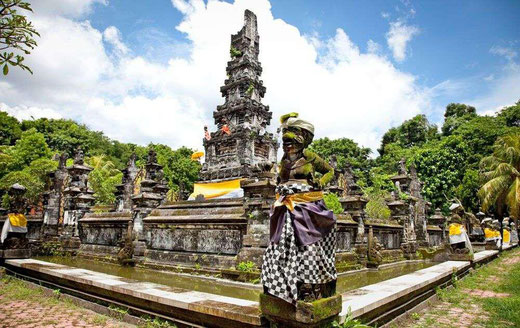
Architecture: The temple's architecture reflects classical Balinese temple design, with intricate carvings and traditional structures. It features a split gate (candi bentar) and several multi-tiered shrines (meru) that symbolize different deities and aspects of Hindu cosmology.
Piodalan Celebration: Pura Jagatnatha celebrates its annual piodalan (temple anniversary) with great enthusiasm. During this time, the temple is adorned with colorful decorations, and ceremonies are held to honor the deities and seek blessings for the community.
Accessibility: Being situated in Denpasar, the temple is relatively easy to access by both locals and tourists. It welcomes visitors interested in observing Hindu rituals and experiencing Balinese culture.
Etiquette for Visitors: When visiting Pura Jagatnatha, it is essential to follow local customs and traditions. Visitors are expected to dress respectfully, wear sarongs (provided at the temple entrance if needed), and maintain a quiet and reverent demeanor.
Puputan Square
Puputan Square, also known as Lapangan Puputan Badung, is a historical and cultural landmark located in the heart of Denpasar, the capital city of Bali, Indonesia. The square is a significant historical site that commemorates the heroic Puputan battle that took place in 1906.
The term "puputan" refers to a traditional Balinese ritual of collective suicide committed by the royal family and followers as an act of resistance against Dutch colonial forces. In the case of Puputan Square, it commemorates the Puputan Badung, a tragic event that occurred on September 20, 1906.
During that time, the Dutch colonial forces sought to exert control over the island of Bali, leading to a confrontation between the Dutch troops and the royal family of Badung Kingdom (located in Denpasar). Rather than submitting to the Dutch, the royal family, led by the King and Queen, along with their followers, chose to fight to the death. The Puputan Badung resulted in the tragic loss of thousands of Balinese lives.
Today, Puputan Square is a place of remembrance and honor for the bravery and sacrifice of the Balinese people during the colonial
era.
It serves as a symbol of resistance and cultural pride for the local population.
The square features a monument, known as the Puputan Badung Monument, that stands as a memorial to those who lost their lives during the Puputan battle.
Visitors to Puputan Square can also find lush green spaces and a peaceful environment amidst the bustling city. The site is not only a historical attraction but also a central gathering place for various events and ceremonies held in Denpasar.
Badung/Kumbasari Market
A renovated market that provides all the locals needs. Beautifully arranged fruit, flowers for offerings, herbs, spices and all kinds of local handicrafts stretch out into two main buildings over the Denpasar River. Jl.Sulawesi is the neighboring street that provides a myriad of fabrics and textiles.
Kreneng Market
This is the second largest traditional market in Denpasar. It is renowned for its night stalls selling many varieties of Balinese food and drink.
Bird Market
Located on Jl.Veteran, this market sells an assortment of beautiful birds and other animals including the unique Kintamani dog.
Catur Muka Statue (Four faced Statue)
Standing in the center of Denpasar, to one side of the Puputan Square, is a large granite statue depicting Brahma as the almighty Creator of the world, nature and all its inhabitants.
Puri Satria, Pemecutan Jero Kuta and Puri Kesiman
These palaces have seen better days but all are a good example of the traditional Balinese architecture.
sanur
Sanur is a popular coastal town located on the southeastern coast of the island of Bali, Indonesia. It is one of Bali's oldest and most well-established tourist destinations, known for its laid-back atmosphere, beautiful beaches, and traditional Balinese charm. Here are some key highlights about Sanur:
Beaches: Sanur boasts a long stretch of white sandy beaches that are protected by a reef, creating calm and shallow waters. The beach is perfect for swimming, sunbathing, and water sports. The sunrise views from Sanur Beach are particularly renowned and attract many visitors.
Relaxed Atmosphere: Unlike some of the more bustling and party-centric areas of Bali, Sanur offers a more tranquil and relaxed vibe. It's an excellent destination for those seeking a quieter and more peaceful vacation experience.
Water Activities: Due to the protected waters, Sanur is a great place for water activities such as snorkeling, diving, stand-up paddleboarding, and windsurfing. The reef also provides good opportunities for exploring marine life.
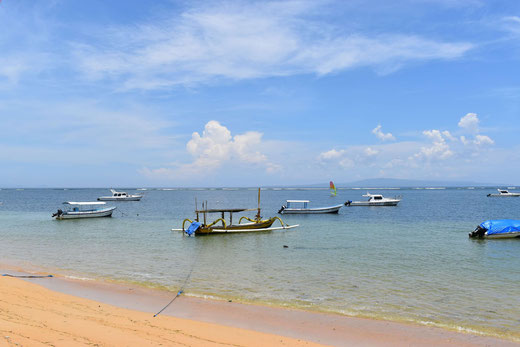
Promenade: Sanur features a beautiful paved beachfront promenade that stretches for several kilometers. It's perfect for leisurely walks, jogging, or cycling while enjoying the sea breeze and ocean views.
Cultural Attractions: While Sanur is a relatively calm destination, it still offers some cultural attractions. For example, you can visit the Le Mayeur Museum, which houses the artworks of the Belgian painter Adrien-Jean Le Mayeur and showcases traditional Balinese architecture.
Local Markets: Sanur has traditional markets where you can buy handicrafts, souvenirs, and local artworks. The Sindhu Market is one of the popular spots for shopping and trying out local street food.
Accommodation: Sanur offers a wide range of accommodation options, from luxurious resorts to mid-range hotels and budget guesthouses. It caters to various budgets and preferences.
Proximity to Other Attractions: Sanur's location provides easy access to other notable Bali destinations. For instance, the cultural hub of Ubud is a short drive away, and you can also reach the popular beaches of Kuta and Seminyak relatively easily.
Annual Kite Festival: Sanur hosts an annual International Kite Festival, where kite enthusiasts from around the world showcase their unique and colorful kites. It's a vibrant and festive event, usually held around July or August.
badung
The Badung Regency is one of the regencies (administrative divisions) located in the southern part of Bali, Indonesia. It is known for being one of the most popular tourist destinations on the island and is home to several well-known areas that attract visitors from around the world.
Kuta: One of the most famous tourist spots in Badung Regency, Kuta is known for its beautiful sandy beaches and vibrant nightlife. It's a hub for surfers, shoppers, and party-goers.
Seminyak: Located adjacent to Kuta, Seminyak is another popular tourist area known for its high-end shopping, luxury accommodations, and trendy restaurants and bars.
Canggu: A coastal village in the Badung Regency, Canggu has become a popular destination for digital nomads and expatriates. It offers a more laid-back atmosphere compared to Kuta and Seminyak, with rice paddies and surf spots.
Jimbaran: This area is famous for its beautiful beaches and seafood restaurants. It's a great place to enjoy a romantic beachside dinner at sunset.
Nusa Dua: Known for its luxury resorts and pristine beaches, Nusa Dua is a popular destination for those seeking a more upscale and tranquil vacation.
Uluwatu: Located on the southwestern tip of the Bukit Peninsula, Uluwatu is known for its stunning clifftop temple, Uluwatu Temple, and some of the best surf breaks in Bali.
History
The rise of tourism in Badung Regency can be traced back to the early-to-mid 20th century, although it gained significant momentum in the 1970s and 1980s. Several factors contributed to the growth of tourism in the area:
Bali's Allure: Bali has always been known for its natural beauty, lush landscapes, stunning beaches, and vibrant culture. Its unique blend of Hindu-Balinese traditions, art, and architecture made it an attractive destination for travelers seeking a diverse and exotic experience.
International Recognition: In the 1930s, Bali received significant attention from prominent artists, scholars, and writers from around the world, who praised its distinctive culture. This exposure helped draw attention to the island as a potential tourist destination.
Infrastructure Development: In the 1960s and 1970s, the Indonesian government, with support from international organizations, invested in infrastructure development, including roads, airports, and hotels, to accommodate the growing number of tourists.
International Marketing: The Indonesian government actively promoted Bali as a tourist destination through international marketing campaigns, attracting visitors from various countries, especially from Europe, Australia, and Asia.
Surfing and Diving: Bali's southern coastline, including areas like Kuta and Uluwatu, gained fame among surfers and divers for their excellent waves and underwater beauty. These sports enthusiasts contributed to the early tourism growth in the region.
Nightlife and Entertainment: The development of vibrant nightlife, with bars, clubs, and entertainment venues, further attracted younger travelers looking for a lively social scene.
Uluwatu Temple
Uluwatu Temple, also known as Pura Luhur Uluwatu, is one of the most iconic and significant temples in Bali, Indonesia. It is a Hindu sea temple that is perched on the edge of a steep cliff, approximately 70 meters above the Indian Ocean. The temple is located in the southern part of Bali, near the town of Pecatu.
Religious Significance: Uluwatu Temple is one of the six major sea temples in Bali, which are believed to be the spiritual pillars protecting the island from evil spirits and negative influences from the sea.
Spectacular Location: The temple's strategic location on a cliff offers breathtaking panoramic views of the ocean, especially during sunset. Its location makes it one of Bali's most popular spots for cultural performances and traditional dance shows.
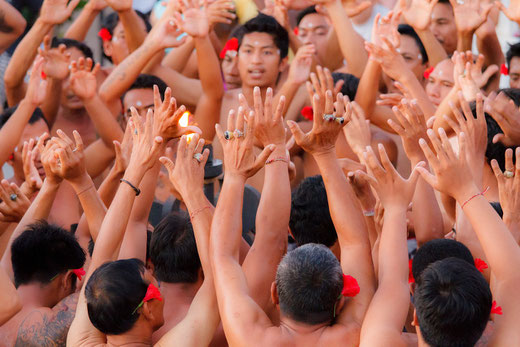
Architecture: The temple's architectural style is typical of Balinese Hindu temples, with its stone foundations and traditional Balinese gateways (known as "candi bentar"). Visitors are often not allowed to enter the main temple area, but they can explore the outer parts and enjoy the scenic surroundings.
Monkey Population: Like many other temples in Bali, Uluwatu is also inhabited by a significant population of monkeys. These monkeys are known to be mischievous, so visitors are advised to be cautious with their belongings.
Cultural Performances: Uluwatu Temple is famous for its traditional Kecak dance performances, which take place every evening against the backdrop of the setting sun. The dance narrates episodes from the Hindu epic, Ramayana, and is a captivating spectacle for visitors.
Dress Code: As with most Balinese temples, visitors are required to adhere to a strict dress code when entering Uluwatu Temple. This typically involves wearing a sarong and a sash, which are often available for rent at the temple's entrance.
Spiritual Practices: Uluwatu Temple is an active place of worship, so visitors may encounter devotees engaging in religious rituals and ceremonies during their visit.
Ocean Views and Beaches: In addition to the temple itself, the area around Uluwatu is known for its beautiful beaches and great surfing opportunities. Some popular nearby beaches include Padang Padang Beach and Bingin Beach.
suluban or blue point beach
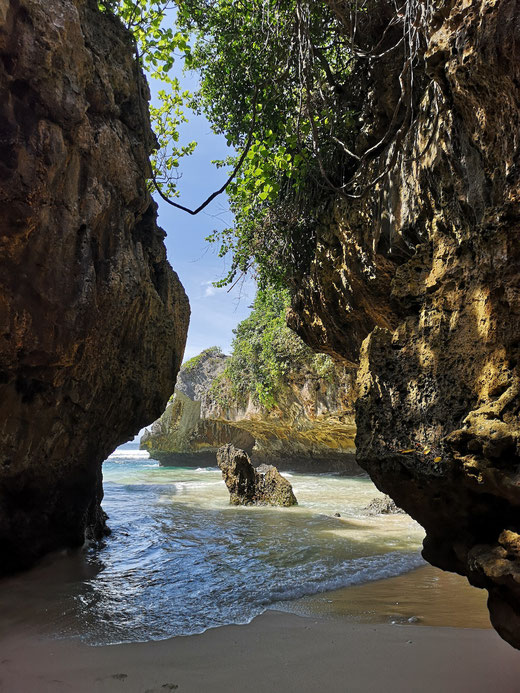
Suluban, also known as Blue Point Beach, is a popular destination located in the southern part of Bali. It is a unique and picturesque beach that is known for its stunning rock formations and crystal-clear turquoise waters.
Scenic Location: Suluban Beach is situated near the village of Pecatu in the Bukit Peninsula, south of Bali. To access the beach, visitors have to descend through a narrow gorge, adding to its allure.
Surfing: The beach is a hotspot for surfers due to its consistent waves and reef breaks. Surfing enthusiasts often visit Suluban to catch some waves and enjoy the thrill of the sport.
Rock Caves and Tunnels: One of the unique features of Suluban Beach is its rocky terrain, which includes caves and tunnels formed by the erosion of limestone cliffs. Exploring these formations can be an adventurous experience for visitors.
Low Tide Attractions: During low tide, visitors can walk around and explore tide pools among the rocks, revealing fascinating marine life and colorful sea creatures.
Sunset Views: Suluban Beach offers beautiful sunset views, making it a perfect spot for evening relaxation and photography.
Beach Culture: The beach area has a laid-back and relaxed atmosphere. It's common to find beach bars, cafes, and small shops selling souvenirs and surfing gear.
Access: As mentioned earlier, accessing Suluban Beach can be a bit tricky due to the steep and narrow paths. Visitors need to descend a series of steps and walk through the rock crevices to reach the shore. However, this adds to the adventure and charm of the place.
Nusa dua
Nusa Dua is known for its luxurious resorts, stunning beaches, and upscale amenities, making it a preferred choice for travelers seeking a more relaxed and upscale experience on the island.
Beaches: Nusa Dua boasts beautiful white sandy beaches with crystal-clear waters, making it an ideal spot for swimming, sunbathing, and water sports. The beaches are well-maintained and often secluded, offering a more tranquil atmosphere compared to some of Bali's busier beaches.
Resorts and Accommodation: The area is home to a wide range of high-end hotels and resorts, many of which are five-star establishments. These luxury resorts often feature private beach access, world-class spa facilities, golf courses, and various dining options.
Golf Courses: Nusa Dua is a golfing paradise with several championship golf courses that attract golf enthusiasts from around the world. The courses are beautifully landscaped and offer scenic views of the ocean and surrounding greenery.
Water Sports and Activities: Visitors can enjoy a variety of water-based activities, including snorkeling, scuba diving, jet skiing, and parasailing. Nusa Dua's clear waters and abundant marine life make it an excellent spot for underwater adventures.
Cultural Performances: Some resorts in Nusa Dua offer traditional Balinese dance performances and cultural shows, providing guests with a glimpse into the rich cultural heritage of Bali.
Shopping: While Nusa Dua may not be as known for shopping as other parts of Bali, it still offers some shopping options, including high-end boutiques and art galleries. For a more extensive shopping experience, visitors can head to nearby towns like Kuta or Seminyak.
Security and Cleanliness: Nusa Dua is considered one of the safest and cleanest areas in Bali. The resort complex is well-maintained, and security measures are in place to ensure the safety and comfort of tourists.
jimbaran
Jimbaran is known for its beautiful sandy beaches, tranquil waters, and stunning sunsets, making it an ideal spot for relaxation and beach activities.
Beaches: Jimbaran is renowned for its long stretch of white sand beaches, with Jimbaran Beach being the most famous. The calm waters and gentle waves make it an excellent location for swimming and other water activities. Additionally, the beach is dotted with numerous seafood restaurants offering a unique dining experience directly on the sand during sunset.
Seafood Market and Restaurants: Jimbaran is synonymous with its seafood market and beachfront restaurants. The seafood market, located near the beach, is a bustling spot where fishermen bring in their catch of the day, and visitors can purchase fresh seafood to be grilled at the nearby eateries. The seafood dinner experience by the sea is one of the highlights for many tourists visiting Jimbaran.
Luxury Resorts: The area is home to several high-end resorts and hotels that offer luxurious accommodations, infinity pools with breathtaking views, spa facilities, and private access to the beach.
Surfing: While the waters in Jimbaran are generally calm, nearby areas like Uluwatu and Balangan are known for excellent surfing conditions. Surfers often visit these spots for more challenging waves and surfing adventures.
Proximity to Ngurah Rai International Airport: Jimbaran is conveniently located near Bali's international airport, making it a popular choice for tourists arriving or departing from the island.
Fishing Village Charm: Despite the growth in tourism, Jimbaran has managed to maintain its fishing village charm, especially in the northern areas, where you can see traditional wooden boats, known as "jukungs," lining the shore.
Beaches of Bukit
Southern peninsula. Uluwatu, Geger, Goa Suluban, Padang Padang, Nyang Nyang, Bingin, Dreamland, Nusa Dua, Jimbaran, Kedonganan. Many of the above mentioned beaches are famous surfing spots. Some are difficult to access and the waves are generally for the intermediate to advanced surfer. Beware of corals and strong currents.
Kuta
Kuta is a popular tourist destination located on the western coast of Bali, Indonesia. It is one of the most famous beach resorts on the island and has attracted travelers from around the world. Kuta's transformation from a sleepy fishing village to a bustling tourist hotspot is a fascinating story.
Historical Background:
Before becoming a tourist destination, Kuta was a small and quiet fishing village with a long history dating back centuries. The local Balinese people mainly engaged in traditional fishing and farming activities, and the area was not well-known to the outside world.
Tourism Boom:
The turning point for Kuta came in the 1930s when the Dutch colonialists, who had ruled Indonesia at the time, began to promote Bali as a tourist destination. However, it was not until the 1960s and 1970s that Kuta experienced a significant surge in tourism.
The 1960s saw the rise of the "Hippie Trail," a popular route followed by hippies and adventurous backpackers seeking spiritual experiences and exotic destinations. Bali, with its stunning landscapes, rich culture, and friendly locals, became a stopover on this trail, and Kuta started to receive a small influx of Western tourists.

Surfing and the Discovery of Kuta Beach:
In the early 1970s, Kuta's potential as a surfer's paradise was discovered. Word spread among surfers that the waves in Kuta were excellent, attracting even more travelers, especially from Australia and the United States. Surfers were drawn to the consistent and challenging waves, making Kuta a mecca for surfing enthusiasts.
Rapid Development and Global Recognition:
As more travelers flocked to Kuta, the village experienced rapid development to accommodate the growing tourism industry. Hotels, restaurants, bars, and shops sprouted up along the coastline, transforming the once quaint fishing village into a bustling and cosmopolitan destination.
During the 1980s and 1990s, Kuta's fame continued to grow, and it became synonymous with Bali's tourism industry. The beach became an iconic symbol of Bali's allure, with its beautiful sunsets, lively atmosphere, and vibrant nightlife.
Challenges and Sustainability:
Kuta's popularity also brought some challenges. The rapid and sometimes unplanned development led to environmental concerns, such as pollution and erosion, threatening the natural beauty of the area. Additionally, the increase in tourism placed pressure on local resources and traditional ways of life.
In recent years, efforts have been made to address these issues and promote sustainable tourism practices in Kuta and throughout Bali. The Balinese government and various organizations have been working to preserve the island's cultural heritage and natural beauty while balancing the demands of tourism.
Despite these challenges, Kuta remains a sought-after tourist destination. Its unique blend of stunning beaches, excellent surf, cultural richness, and lively nightlife continues to attract travelers from all corners of the globe. Whether you're a surfer, a sun-seeker, or someone interested in exploring Balinese culture, Kuta offers a diverse and memorable experience.
Seminyak
Seminyak is a popular tourist destination located on the west coast of Bali. It is well-known for its beautiful beaches, vibrant nightlife, upscale resorts, boutique shopping, and excellent dining options.
Beaches: Seminyak boasts stunning beaches with soft white sands and great surf breaks. Double Six Beach, Petitenget Beach, and Seminyak Beach are some of the famous ones where visitors can relax, sunbathe, and enjoy water activities.
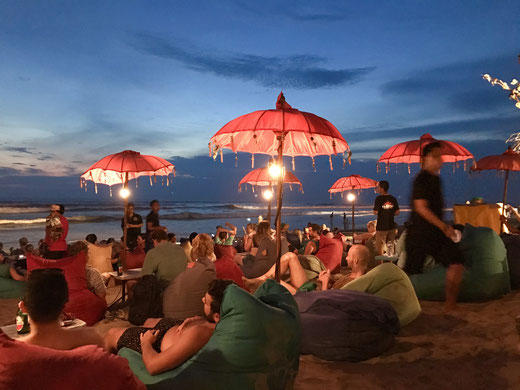
Shopping: The area is renowned for its trendy boutiques, art shops, and fashion stores. The streets are lined with a variety of shops offering clothing, accessories, home decor, and unique souvenirs.
Restaurants and Dining: Seminyak is a food lover's paradise with a wide range of restaurants, cafes, and eateries serving local Balinese cuisine, as well as international dishes from around the world. Many of these establishments are situated along the beach, providing a great ambiance for dining.
Nightlife: The nightlife in Seminyak is vibrant and lively, with numerous bars, clubs, and beach clubs where visitors can enjoy live music, dancing, and socializing.
Accommodation: Seminyak offers a diverse range of accommodation options, including luxury resorts, boutique hotels, villas, and budget-friendly guesthouses. The area caters to different preferences and budgets.
Spa and Wellness: There are plenty of spas and wellness centers in Seminyak, offering various treatments and therapies to help visitors relax and rejuvenate.
Cultural Attractions: While Seminyak is more famous for its leisure and entertainment, it's also close to some cultural attractions on the island, such as Pura Petitenget, a beautiful Hindu temple located near the beach.
canggu
Canggu is a coastal village and popular tourist destination. Over the years, Canggu has transformed from a sleepy fishing village to a vibrant and trendy area, attracting tourists, expatriates, and digital nomads alike.
Location: Canggu is situated on the southwest coast of Bali, about 10 kilometers north of the bustling tourist hub of Seminyak. It's known for its beautiful beaches, lush rice paddies, and laid-back atmosphere.
Surfing: Canggu is renowned for its surf breaks, making it a paradise for surfers of all levels. Echo Beach and Batu Bolong Beach are two popular spots among surf enthusiasts.
Rice Fields: Despite its rapid development, Canggu still retains its rural charm with picturesque rice fields, adding a touch of tranquility to the area.
Restaurants and Cafes: The region is home to numerous cafes and restaurants offering a diverse range of cuisines. You'll find everything from local Indonesian dishes to international fare, with a focus on healthy and organic options.
Nightlife: Canggu has a vibrant nightlife scene with beach clubs, bars, and live music venues where visitors and locals can unwind and enjoy the evenings.
Yoga and Wellness: The area attracts many health-conscious individuals interested in yoga, wellness retreats, and holistic practices. There are numerous yoga studios and wellness centers in and around Canggu.
Accommodation: Canggu offers a wide range of accommodation options, from budget-friendly hostels to luxury villas. Many travelers prefer to stay in private villas that often come with private pools and lush gardens.
Digital Nomad Hub: Canggu has become a popular destination for digital nomads seeking a blend of beach lifestyle and a coworking-friendly environment. As such, you'll find several coworking spaces that cater to remote workers.
Shopping: Canggu boasts a variety of boutiques, local artisan shops, and trendy stores selling everything from clothing and jewelry to homeware and souvenirs.
Traffic and Development: As Canggu's popularity has grown, so has the traffic congestion and development in the area. It's worth noting that the increase in tourism and development has led to some challenges in preserving the area's natural beauty and local character.
Bukit Sari Monkey Forest and Pura Bukit Sari
The Monkey Forest in Sangeh is a popular tourist attraction located in the village of Sangeh, approximately 20 kilometers north of Denpasar. It is known locally as "Mandala Suci Wenara Wana" or "Bukit Sari Monkey Forest." The forest is one of several monkey sanctuaries on the island of Bali and is home to a large population of long-tailed macaques.
Sacred Site: The Sangeh Monkey Forest is not just a tourist attraction but also holds religious and cultural significance for the local Balinese people. It is considered a sacred site and is associated with various myths and legends from Balinese Hinduism.
Natural Habitat: The Monkey Forest spans over an area of dense forest, where the macaques live freely in their natural habitat. Tall nutmeg trees dominate the area, providing a unique and tranquil setting for visitors.
Macaca fascicularis: The monkeys found in the Sangeh Monkey Forest are the Macaca fascicularis species, also known as the Balinese long-tailed macaques. While they may seem friendly and approachable, it's essential to exercise caution and follow any guidelines provided by the local authorities to avoid any unwanted incidents.
Interaction with Monkeys: Visitors have the opportunity to interact with the monkeys, observe their behavior, and take photographs. However, it's crucial to be respectful and cautious while doing so. Feeding the monkeys is generally discouraged to prevent aggressive behavior and reliance on human food.
Conservation and Preservation: The Monkey Forest in Sangeh is managed by local communities, and efforts are made to preserve the natural environment and protect the monkey population. Entrance fees collected from tourists often contribute to the conservation and maintenance of the forest.
Balinese Architecture: Within the Monkey Forest, you may also find some Balinese temples (Pura Bukit Sari) and shrines, adding to the cultural significance of the site.
Visitor Facilities: The Sangeh Monkey Forest usually provides basic visitor facilities such as parking areas, restrooms, and small stalls where you can purchase food and souvenirs.
As with any wildlife interaction, it's essential to be mindful of the monkeys' natural behavior and maintain a safe distance to ensure both their well-being and your own.
Pura Taman Ayun
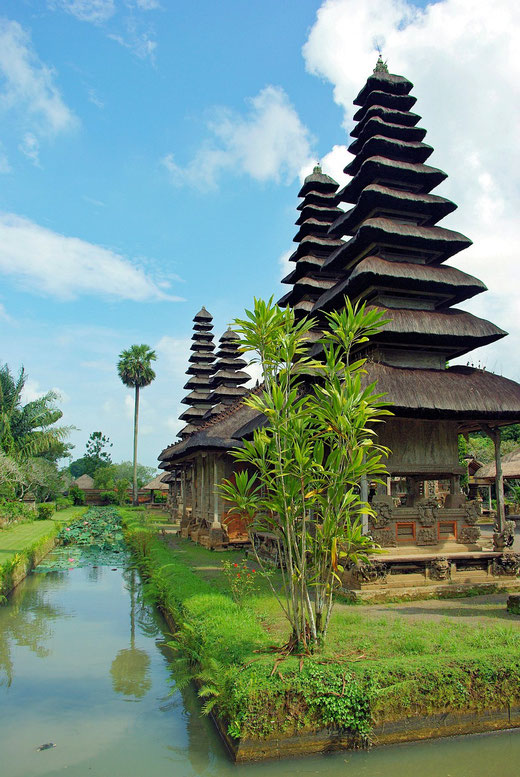
Pura Taman Ayun is a beautiful and historically significant Hindu temple located in the village of Mengwi. It is one of the island's most well-known temples and holds great cultural and religious importance to the local community.
The name "Taman Ayun" translates to "Beautiful Garden" in the Indonesian language, and the temple indeed features stunning garden landscapes, surrounded by water features and lotus ponds, which enhance its serene and picturesque atmosphere.
The temple was built during the 17th century and served as the royal family temple of the Mengwi Kingdom. It was originally constructed by the ruler of Mengwi, I Gusti Agung Putu, as a tribute to his ancestors.
One of the main highlights of Pura Taman Ayun is its unique architectural design. The temple showcases a blend of traditional Balinese architectural elements with Chinese architectural influences, which is evident in its multi-tiered shrines (meru) and the elaborately carved wooden gates (candi bentar).
Pura Taman Ayun is divided into three main courtyards, each accessible through gates and pathways. The outermost courtyard is open to the public, while the inner courtyards are reserved for religious ceremonies and rituals.
The temple is dedicated to the worship of Hindu deities, primarily Vishnu, who is considered the preserver in Hinduism. The tranquil surroundings and the reverence of the temple make it a popular destination for both locals and tourists seeking to experience the spiritual and cultural essence of Bali.
When visiting Pura Taman Ayun, it's essential to respect the local customs and traditions. Modest attire is required, and visitors are encouraged to follow guidelines provided by temple staff.
Overall, Pura Taman Ayun offers a delightful insight into Balinese culture, architecture, and spirituality and is a must-visit destination for anyone exploring the island of Bali.
Serangan Island
Serangan Island (also known as Pulau Serangan) is a small island located just off the southeastern coast of Bali. It is situated approximately 5 kilometers south of Denpasar, the capital city of Bali.
Turtle Conservation: Serangan Island is known for its turtle conservation efforts. The local community has been actively involved in protecting sea turtles and their eggs, which are vulnerable to poaching and habitat destruction. The island has a turtle conservation center where efforts are made to rehabilitate injured turtles and protect their nesting sites.
Traditional Fishing Village: Serangan Island has a long history as a traditional fishing village. The local inhabitants have been relying on fishing as their primary livelihood for generations.
Spiritual Significance: The island is also of spiritual significance to the Balinese people. There are several temples on the island, and it holds cultural importance in local religious ceremonies and traditions.
Island Accessibility: Serangan Island is relatively accessible from the mainland, as it is connected by a small causeway. This makes it convenient for tourists and visitors to explore the island's attractions.
Marine Activities: Due to its coastal location, Serangan Island offers opportunities for various marine activities, such as snorkeling, diving, and fishing.
comments
This list is for sure not complete. We welcome your comments and encourage you to share additional touristic, cultural, or historical facts about this regency. Your insights will benefit other readers visiting this page.

